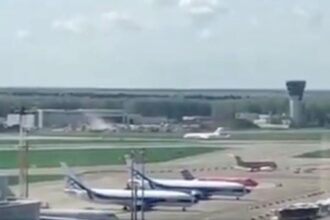On January 15, 2009, US Airways Flight 1549 (AWE1549), an Airbus A320 piloted by Captain Chesley B. “Sully” Sullenberger and First Officer Jeffrey Skiles, made an unpowered emergency water landing in the Hudson River after multiple bird strikes caused both jet engines to fail. All 155 occupants, the passengers and crew, successfully evacuated from the partially submerged airframe as it sank into the river; they were rescued by nearby watercraft. Several occupants suffered injuries, a few of them serious, but only one required hospitalization overnight. The incident came to be known as the “Miracle on the Hudson”, and Captain Sullenberger was soon regarded as a hero by some accounts.
The aircraft was an Airbus A320-200, registered N106US, operating as a US Airways scheduled domestic commercial passenger flight from LaGuardia Airport in New York City to Charlotte Douglas International Airport in Charlotte, North Carolina. About three minutes into the flight, at 3:27 p.m. EST, the plane struck a flock of Canada geese during its initial climb out from LaGuardia, just northeast of the George Washington Bridge. The bird strike caused both jet engines to quickly lose power.
As the aircraft lost altitude, the flight deck crew decided that the plane could not reach the closest airfield. They turned southbound and glided over the Hudson, finally ditching the airliner off midtown Manhattan near theIntrepid Sea-Air-Space Museum, about three minutes after losing power.
The entire crew of Flight 1549 was awarded the Master’s Medal of the Guild of Air Pilots and Air Navigators. The award citations read, “This emergency ditching and evacuation, with the loss of no lives, is a heroic and unique aviation achievement.” National Transportation Safety Board member Kitty Higgins described the feat as “the most successful ditching in aviation history.”









